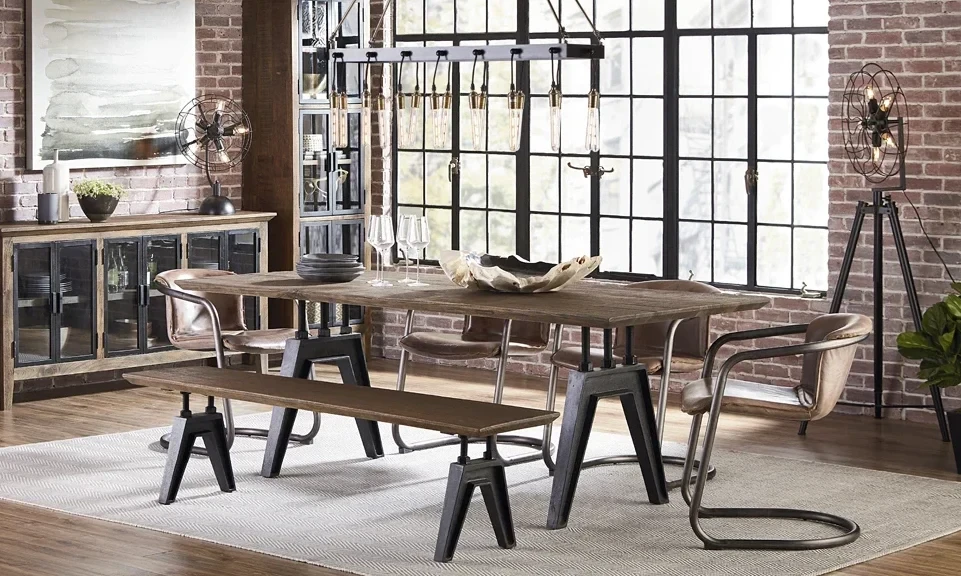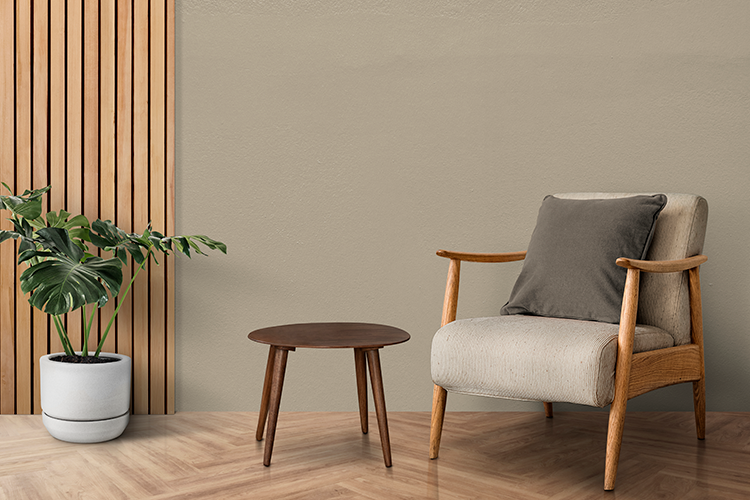Email format error
Email cannot be empty
Email already exists
6-20 characters(letters plus numbers only)
The password is inconsistent
Email format error
Email cannot be empty
Email does not exist
6-20 characters(letters plus numbers only)
The password is inconsistent



The choice of materials in furniture design is a pivotal decision that greatly influences the style, durability, and functionality of a piece. Two of the most commonly used materials in furniture design are wood and metal, each with its unique characteristics and aesthetics. In this blog, we'll delve into the world of wood and metal in furniture design, exploring their qualities, design possibilities, and how to choose the right material for your home.
The Warmth of Wood
Wood has been a staple in furniture design for centuries, and its timeless appeal continues to captivate. Here are some key characteristics of wood in furniture design:
Natural Aesthetic: Wood's natural grains, patterns, and textures exude warmth, character, and a sense of authenticity. From the deep, rich tones of mahogany to the light, airy feel of oak, wood offers an array of aesthetic possibilities.
Versatility: Wood can be shaped, carved, and crafted into an extensive range of furniture styles, from traditional to modern, rustic to contemporary. Its versatility makes it suitable for various design aesthetics.
Durability: High-quality wood, especially hardwoods like oak, maple, and cherry, is exceptionally durable and can withstand years of use. It's a long-term investment in your home.
Sustainability: Many furniture designers and manufacturers prioritize sustainability by using responsibly sourced and certified wood. This makes wood a greener choice for environmentally conscious consumers.
Maintenance: Wood furniture typically requires regular maintenance, including cleaning, polishing, and occasional refinishing, to keep it looking its best.
Comfort: Wood is comfortable to touch and sit on. Wooden chairs and sofas are inviting and cozy, making it a popular choice for seating.
The Strength of Metal
Metal is a modern and industrial material that offers its own set of unique attributes for furniture design:
Sleek and Contemporary: Metal furniture is known for its sleek, minimalist aesthetic. It can add a touch of contemporary elegance to any space, making it a favorite in modern design.
Strength and Stability: Metal, especially steel, is incredibly strong and durable. It's suitable for creating furniture that can withstand heavy use and wear and tear.
Versatility: Metal can be molded and shaped into a variety of forms and structures, from clean and simple lines to intricate, ornate designs. It is often used for creating lightweight, space-saving furniture.
Low Maintenance: Metal furniture is low-maintenance. It's easy to clean and generally doesn't require refinishing or special care to maintain its appearance.
Visual Lightness: Metal furniture often provides a visual lightness, as its thin, slender frames create the illusion of more space in a room.
Outdoor Use: Metals like aluminum and stainless steel are frequently used for outdoor furniture, as they are corrosion-resistant and withstand the elements.
Choosing Between Wood and Metal
The choice between wood and metal in furniture design depends on various factors, including your personal style, the intended use of the furniture, and the specific room. Here are some considerations:
Style: Consider the overall style and aesthetic of your space. Wood may be more appropriate for a traditional, rustic, or cozy atmosphere, while metal can fit seamlessly into modern or industrial settings.
Function: Think about the intended use of the furniture. Wood is often preferred for tables and seating, while metal can be a great choice for shelving, desks, or outdoor furniture.
Maintenance: Assess how much time and effort you're willing to invest in maintenance. Wood may require more care and refinishing, while metal is typically low-maintenance.
Comfort: For seating, the comfort and tactile warmth of wood may be preferable. However, metal can be more comfortable with the addition of cushions or padding.
Budget: Consider your budget, as high-quality wood furniture can be more expensive than metal pieces.
Sustainability: If environmental considerations are important to you, inquire about the sustainability of the materials and production processes used by furniture manufacturers.
Conclusion
Wood and metal are two remarkable materials in furniture design, each with its own charm and unique qualities. The choice between them depends on your personal style, functional needs, and the ambiance you want to create in your living space. By understanding the attributes and potential of both materials, you can make informed decisions and select the perfect material for your furniture that not only suits your aesthetic preferences but also stands the test of time.